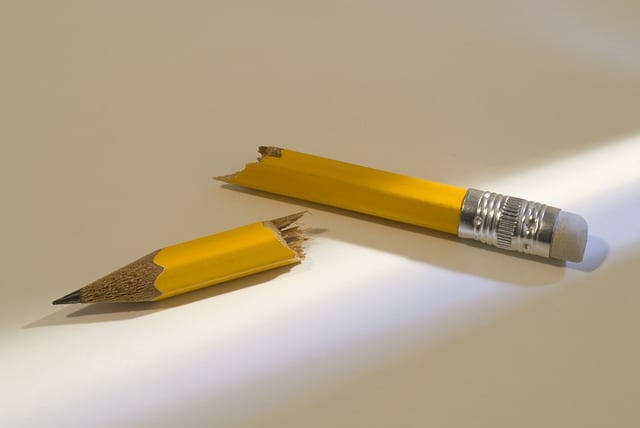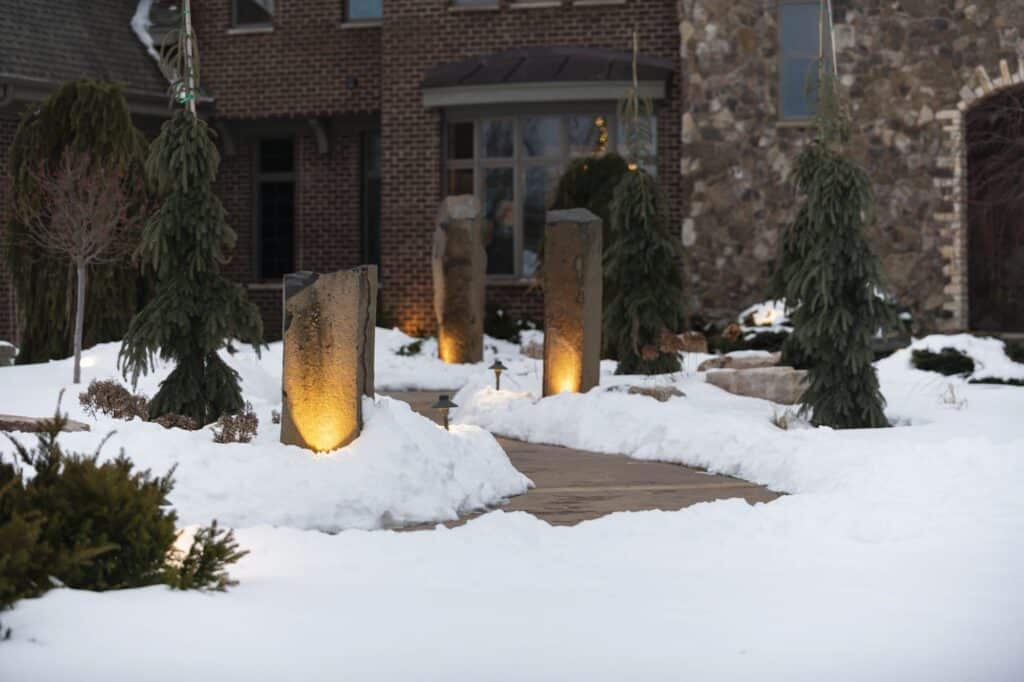
The landscape design process is the foundation for every successful landscaping project.
Throughout the construction process, the landscape design is referenced every day. Observations and suggested changes should be noted because they too will affect the ultimate outcome.
The best-case scenario is to completely update the landscape design after the project is built. This “as-built” plan will serve a valuable reference point for the future as additional changes are common.
Most homeowners are not concerned with these recommended practices as long as the completed project meets their expectations. However, not having them may lead to unanswered questions in the future.
In many ways, the landscape designer is the quarterback of your project. You have hired them to create your project and take it to completion. There will hand-offs to construction crews, but how can you be confident that your intentions are carried out?
Most important it finding a professional landscape designer that you trust. Then be sure to discuss the common landscape design mistakes so that your project meets your standards.
Are These Really Mistakes?
To be fair, it’s important to understand that landscape mistakes are subjective. In other words, if you understand the limitations and are comfortable with the outcome it’s not a mistake.
For example, the Bradford Pear is one of the few upright, Spring-flowering trees. Most people love these trees. However, they may not realize that as they mature the branches can become weak and prone to splitting during a storm.
If you understand these conditions and willingly accept the consequences that may occur 10-20 years down the road, then there is no reason not to enjoy what the tree offers until that time.
Drainage is another example. Tolerances for water that collects after a rainstorm varies. Every property is different and some drainage measures can be costly. So there are tradeoffs to be made between cost and expected outcomes.
The more you know the better you can communicate with your landscape designer to achieve the outcomes that will make you happy. Remember that your landscape design is more than a document. It’s the planning process that makes your outdoor living spaces work for you.
Common Landscape Design Mistakes
Let’s be clear that a landscape designer must have your best interests at heart. That may not be enough if he or she doesn’t have complete control or there are miscommunications about how the project is to be constructed.
It’s easy to avoid these miscommunications. Do your homework and ask good questions throughout the landscape design process. When you come to an agreement about circumstances that are especially important to you, be sure to document that in the plan.
The following ten categories each include at least one common design mistake to avoid.
#1. Drainage Measures
One of the trickiest landscape design challenges is managing surface and sub-surface water flow. A skilled designer will provide a comprehensive plan for surface drainage, water from rain, irrigation, and melting snow. Much of this is determined by meeting the engineered elevations established by the local municipality.
It may also be necessary to have supplemental sub-surface drainage measures. Most homes have a least one. It is a drain tile system that collects water along and beneath the home’s foundation. That water is typically ejected with a sump pump or a similar system where it becomes surface water. Make sure you have a plan to properly manage it.
#2. Hardy Plants
A landscape designer not only needs to recommend plants that are hardy to our Minnesota conditions, he or she also needs to source plants that are locally grown.
Container grown plants such as perennials and small shrubs will not be cold hardy, regardless of where they were grown. These are young plants with tender root systems that need to be the right varieties planted at the right time with properly prepared soil.
Trees and larger shrubs that with B&B (balled and bur lapped) root system should be locally grown to best adapt to our Minnesota soils and environmental conditions. This is especially true of evergreen trees. If they are grown in sandy soils and warmer climates, the likelihood of surviving, much less thriving, is greatly reduced
#3. Soil Preparation
The landscape design process should call out necessary soil preparation. This often falls under the category of site preparation.
Most plant roots do not extend more than a few feet below the surface. Thus, special attention should be given to working and amending the soil as needed to achieve the right structure. Plant a $.50 plant in a $5.00 hole is an expression sometimes used to suggest soil quality may be more important than plant quality.
It’s a common practice to use the existing soil, possibly amending it with organic matter to improve it. However, when heavy equipment is on-site to prepare a project, it may be more cost-effective in the long run to remove and replace compacted or depleted soils before planting begins.
#4. Hardscape Foundations
During a Minnesota winter, the frost line depth extends at least 42″ in the southern portion of the state and as much as 60″ in the northern part. This means structures such as decks and mortared walls must have footings that extend below these depths to prevent damage from frost heaving.
Driveways, patios, and walkways are hardscapes that are designed to float. That is, it is expected they move up and down as subsurface water expands and contracts as it freezes and thaws. Nevertheless, a suitable base is essential to flex throughout that process.
A concrete driveway is an example of a hardscape surface that will not flex. For this reason, expansion joints are necessary to manage that movement and eliminate unwanted cracking. Be sure your landscape design details the necessary foundation specifications to ensure the integrity of its hardscape elements.
#5. Permitting and Safety
The purpose of permitting is to ensure that generally accepted standards are upheld by everyone in the community. This protects each and every homeowner for conditions that are their responsibility and those that are not, such as minimizing the impact of water runoff from an adjacent property.
Smart homeowners will consider exceeding these minimum standards for their own benefit and peace of mind. For example, a Minnesota homeowner may choose to install hardscape structure footings deeper than the village standards to protect against unusually cold winters.
The details of permitting are often carried out by the landscape contractor. However, it is the homeowner that is ultimately responsible. Therefore, to protect your interests be sure to understand the necessary requirements.
In some circumstances, it is possible to discover permitting was not properly done for previously completed work. As a result, you will have to bring everything up to code before proceeding with new projects.

#6. Smart Irrigation
Smart irrigation is exactly what it suggests, taking advantage of planning and technology to conserve this valuable natural resource.
Do not make the mistake of accepting 100% irrigation coverage because it is easy to accomplish at the expense of efficiency. A well-planned irrigation design will use a combination of large and small irrigation heads to cover the desired turf and ornamental plants without unnecessarily watering adjacent hardscape areas.
Other ways to conserve water and save money, in the long run, is having a rain sensor installed that will shut off the system during and shortly after natural rain.
#7. Watershed Management
A watershed is an area of land that contains a common set of streams and rivers that all drain into a single larger body of water. Watershed districts are government entities that monitor and regulate the use of water in watersheds surrounding various lakes and rivers in Minnesota.
If your proper happens to fall within one of these areas, it may be necessary to mitigate the water from your property that enters the natural waterways. The penalties for failing to comply with these regulations can be significant.
#8. Balanced Lighting
A common landscape lighting mistake is installing lights that flood the home and its property, much like a home builder would do for a model home. Once that model home is sold to a homeowner professional lighting techniques that eliminate lighting hot spots should be employed.
A balanced lighting plan will use accent lights for highlighting focal points such as specimen trees, water features, and stone accents. Softer path light can highlight seasonal color and illuminate walks and pathways for safety and nighttime interest.

#9. Suitable Water Feature Pumps
Nothing is more frustrating than a beautiful water feature with an undersized pump. This is true for pools and spas, ponds with waterfalls, and irrigation systems. Because quality pumps can be costly, it can be tempting to sacrifice a little power to meet the budget. You will regret that risk if your pump doesn’t perform.
An equally frustrating problem is a pump that is more powerful than necessary. This can dramatically shorten the life of the pump. Be sure your designer specifies pumps that get the job done in the most efficient way possible.
One exemption is your irrigation system pump. In rapidly growing neighborhoods the prevailing water pressure can drop as more homes tap into the main water source. If that happens it is beneficial to have extra capacity that eliminates the need for an additional booster pump.
#10. Planning and Troubleshooting Measures
One of the best things a designer can do for a homeowner is planning for future additions and enhancements. Some examples of this are:
- Install irrigation pipe for watering ornamental planting beds that are planned for a later phase. This saves the cost and disruption of established landscape plantings.
- Run conduit pipe in the base of patios to facilitate adding electrical wiring without later having to remove bricks or carefully laid stone. The cost is minimal so it’s not a problem if it is never used.
- Bury stretches of drain tile in planting beds for future drainage measures that may be necessary. This allows that remedy to be accomplished without trenching or digging that will damage established tree roots.
- Strategically install a double-wide gate in a stretch of fencing to permit tractor or skid-steer access for future projects without having to remove sections of fencing.
Remember that landscape designs are legal documents that detail how a project is to be built. It is supported by reference material such as plant lists, and of course, the agreement or contract. However, it ultimately is the controlling document that will serve you well if it is thoughtfully and professionally prepared.
Good luck!
